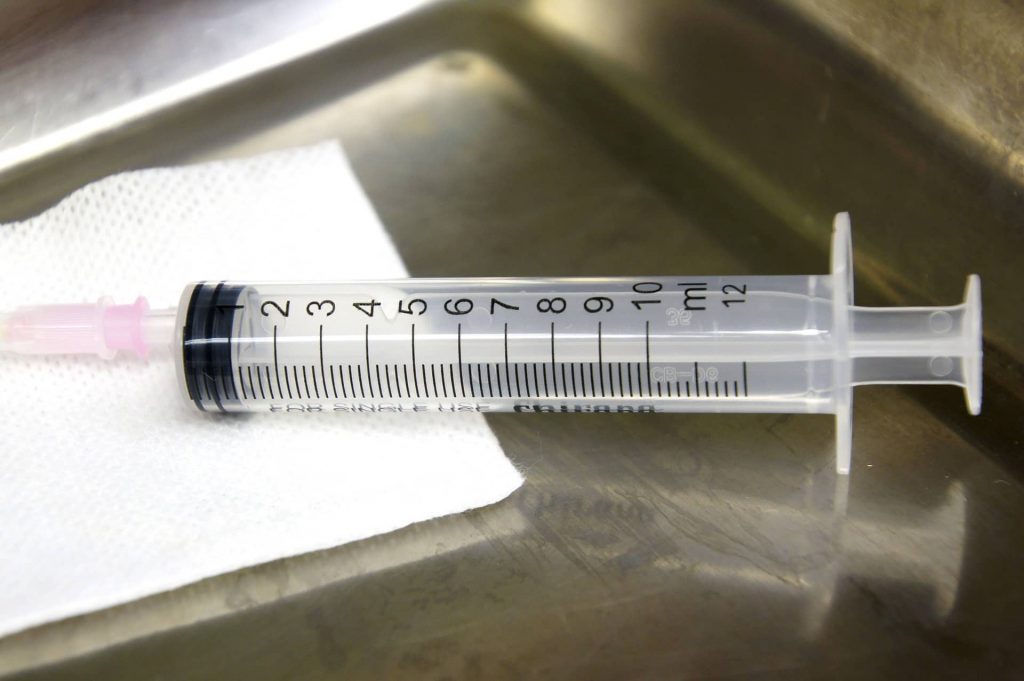Written by Samiha Ali

Harm reduction is a public health strategy aimed at reducing the risks that come with substance abuse. In the case of injection drug use, the practice of harm reduction is especially geared towards supporting safe needle and syringe usage. Needle exchange programs (NEPs) are community-based sites for needle disposal and sterile needle distribution that were established to lower the harmful consequences of drug use.
Blood-borne pathogens like HIV and Hepatitis C can travel via shared needles so the purpose of NEPs is to reduce such transmission among injecting drug users by providing access to sterile needles. Additionally, many sites offer services like wound care and overdose prevention education, referral to treatment programs, and screenings for sexually transmitted diseases. The program has shown time and time again its effectiveness in reducing the transmission of HIV and other infections. In the initial years of NEP’s inception, the incidence of HIV among consistent needle exchange attendees was found to be lower than other users in areas of high drug use [1]. After a NEP began running in Washington D.C. nearly a decade ago, the average monthly rate of HIV infection has dropped by almost 70% [2]. Numerous case studies and analyses have produced similar findings throughout the years highlighting the fact that needle exchange efforts succeed in harm reduction.
Public belief surrounding drug use tends to portray users negatively with addiction viewed as a moral shortcoming rather than a medical condition. The public opinion is consequently skeptical towards effective recovery options and are prone to opposing policies aimed at helping drug users [3]. Given these controversial perceptions regarding drug abuse, it’s not shocking to learn that NEPs are oftentimes stigmatized and naively linked to enabling addiction or promoting drug use. The programs, however, do the contrary. Drug users who utilize NEPs are five times more likely to begin treatment for substance abuse and to reduce or stop injecting than drug users who do not [4]. The opponents of NEPs—which as of last year can acquire federal funding—argue that such money could be better spent going solely towards treatment efforts. However, the lifetime cost of treating one person living with HIV is more than $400,000 while the cost per syringe distributed is only around 97 cents [4]. This demonstrates the cost-effectiveness of NEPs and various data projections have confirmed the profitable relationship between NEPs and healthcare savings.
It is clear to see how crucial harm reduction and needle exchange programs are in terms of public health. Without these services, dirty needles can accumulate in communities and pose health risks to the general public. HIV and other disease rates may observe a spike in transmission and drug users would lose access to education and potential treatment services. Drug use and addiction are complex issues that will continue to be a part of society so refuting the need for NEPs is simply ignoring this fact. Harm reduction acknowledges this reality and tailors its approach to public health safety accordingly.
References:
[1] Des Jarlais, et al. 1996. HIV incidence among injecting drug users in New York City syringe-exchange programmes. The Lancet. 348: 987-991.
https://www.ncbi.nlm.nih.gov/pubmed/8855855
[2] Ruiz, M.S., O’Rourke, A. and Allen, S.T. 2016. Impact evaluation of a policy intervention for HIV prevention in Washington, DC. AIDS and Behavior. 20:22-28.
https://link.springer.com/article/10.1007/s10461-015-1143-6
[3] Barry, C.L., McGinty, E.E., Pescosolido, B.A. and Goldman, H.H. 2014. Stigma, discrimination, treatment effectiveness, and policy: public views about drug addiction and mental illness. Psychiatric Services. 65:1269-1272
https://www.ncbi.nlm.nih.gov/pubmed/25270497
[4] Syringe Service Programs. 2017. Centers for Disease Control and Prevention. Centers for Disease Control and Prevention. Web. 2 Nov. 2017.
https://www.cdc.gov/hiv/risk/ssps.html